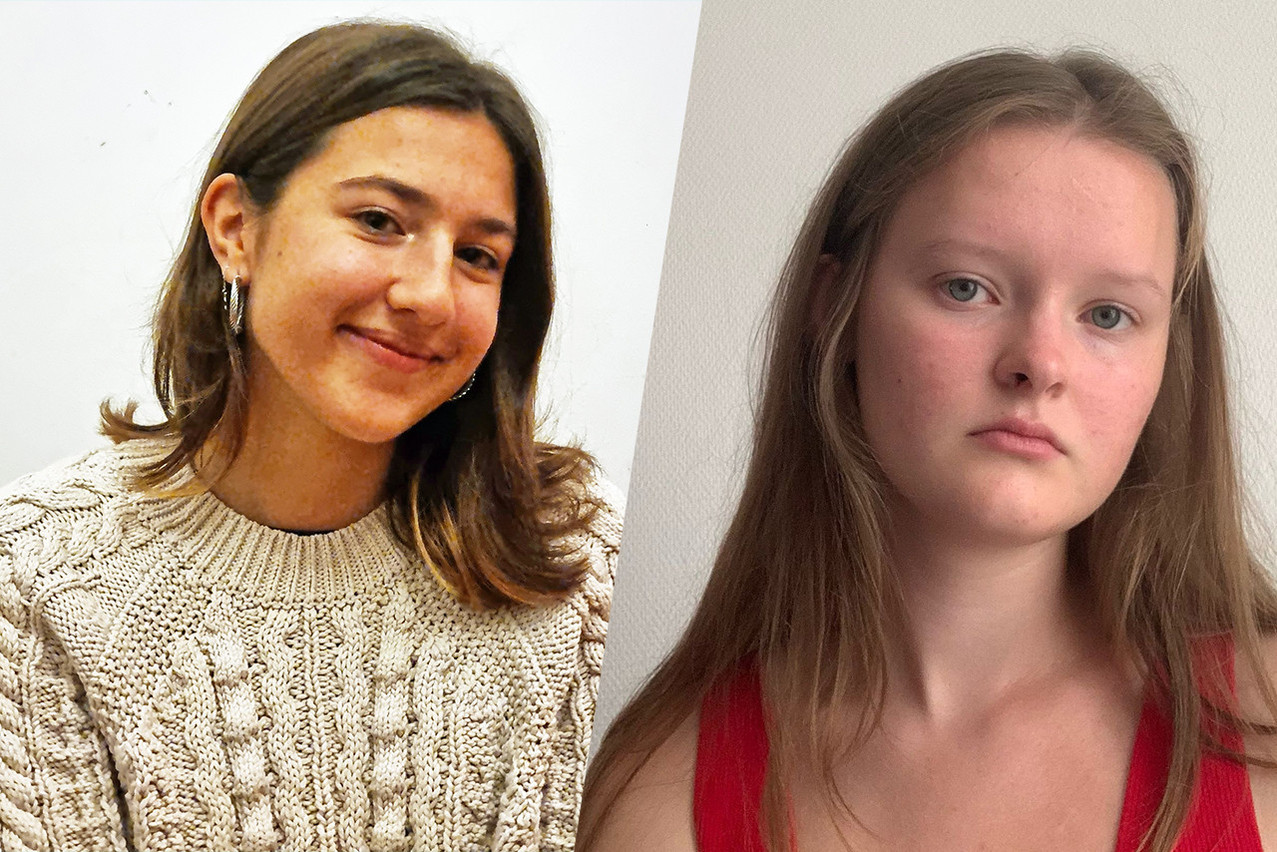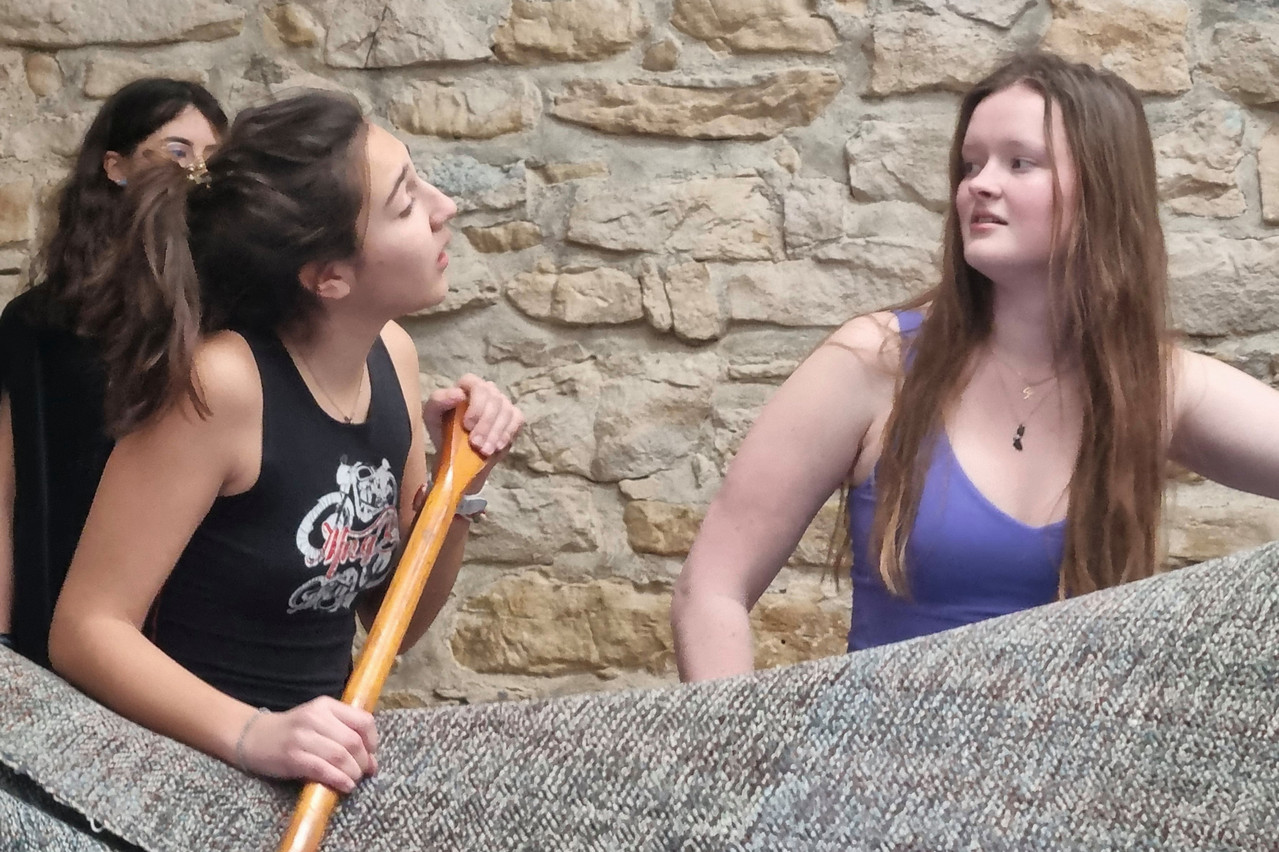Writer and actress Eloïse Heger-Hedløy, who is heading to drama school at the California Institute of the Arts this autumn, came up with the idea of the play while on a gap year. “It was around that time that Emily Dickinson came into my life, and she really interested me,” she explains. “From there, I tried to develop it into as concrete of an idea as I could, before I reached out to Tony [Kingston, the play’s director].”
Emily Dickinson is an American poet who lived and died in the mid-1800s and remained largely unacknowledged during her lifetime. What, I ask Heger-Hedløy, drew her to Dickinson and her poetry?
“Revolutionary” poetry that speaks on many levels
“It started with a TV show,” Heger-Hedløy answers with a laugh. “I’d heard of her, and I’d probably read some poems, but I didn’t really get them until I saw the TV show--it’s called Dickinson, it’s a good show, you should check it out,” she adds with another laugh.
“They really put her poetry in the context of her life, and you really get the meaning behind it as well,” she continues. “That really just drew me to her, and I bought this fat book with all her poems--she wrote nearly 2000 poems in her life--and I got really interested in her.”
Even now, [Dickinson’s poetry] speaks on so many levels to so many different things.
“For the time itself, [her poetry] was revolutionary, but even now, it speaks on so many levels to so many different things, because it has a way of capturing experiences and feelings in a way that you don’t really think of it that way. But once she says it, you can’t not think of it that way.”
The play itself is not biographical, but instead explores the artistry of Dickinson’s poems and the process she used to create them. Heger-Hedløy says she can’t pick a single favourite poem, but adds, “I love all the ones that I put in the play.”
Relating to the poet
Kalina Koeva, who plays Emily Dickinson, says that the role allows her to relate to Dickinson both as a poet and as a person. “Emily Dickinson, in the play, she’s still a teenager. She has a mom, she has a sister, she has those typical teenager problems.”
To prepare for the role, Koeva watched the Emily Dickinson TV show, read about the poet and watched YouTube videos about Dickinson. “But I’ve done most of the figuring out as we go along with rehearsals--that’s when I found out the most about her actually,” says sixteen-year-old Koeva, a student at the European School.
“I’m gonna be honest, I didn’t really understand quite a lot of her poetry, but just with analysing poems and figuring out what they mean and how they fit into the scene, it’s gotten very clear for me, and it’s opened up a new door,” adds Koeva.

Kalina Koeva (left) plays Emily Dickinson; writer Eloïse Heger-Hedløy (right) also performs in the play, playing the role of Raven Sue. Photos: Provided by BGT
It’s not, however, a biographical play--it’s difficult to know exactly what happened in Dickinson’s life as there isn’t very much that has been recorded--but Heger-Hedløy notes that she has tried to remain as accurate as possible. “There are certain things that are recorded within letters and stuff that she wrote, but beyond that, you don’t really get a lot of specific insights.”
Dickinson was known for her baking, as well as for her love of flowers and nature, which are traits that have been incorporated into the play, explains Heger-Hedløy. “But I’ve taken a little bit of a free hand on her life, and rearranged it in a way to fit more the story about her poetry, rather than a biographical telling of her life in a sequential order.”
Themes of nature, death and fame
It’s the poetry that is the focus of the play, which presents a view of how Dickinson deals with “poetic forces, all these ideas and this chaos going on in her head as she’s writing all of these poems. And I think that very much relates to this sort of teenage figuring out what’s happening in life.”
“I wanted to focus on the poetry,” Heger-Hedløy highlights. “So what I’ve did is, I took in general the main themes that we see in her poems, like nature, fame, death, that sort of thing. And I’ve created characters--muses--that we see, and they happen to be reflected by real people in her life.”
“They represent different strands of her poetic impulse, different themes or aspects of it,” adds the play’s director, Tony Kingston. “It’s almost like she’s taken the real people in her life and used them as kind of mental avatars for these themes.”
Seeing the “real” Emily Dickinson
Over one hundred years after her life and death, I ask Heger-Hedløy and Koeva, how is it possible to still relate to Dickinson?
“It wasn’t until after she died that her poems were published. And when they were published, they were very heavily edited,” says Heger-Hedløy. “And it wasn’t until a new, unedited version of her poems came out in the 50s.”
That’s when the “real her” was seen, adds Koeva.
There are so many emotions that she portrays in such different ways.
Heger-Hedløy agrees--interest and desire to know more about Dickinson’s life started to pick up. “As a poet herself, she was very far ahead of her time,” she says, “but [Dickinson] made her own rules and she came up with her own ideas, and she just completely abandoned the conventions of what should be, and just wrote what she felt.”
Dickinson’s poetry is much more flexible, elaborates Kingston. British poetry at the time, for instance, has much more carefully structured sentences--Dickinson wrote in the way people speak, dropping pronouns, skipping verbs or assuming information. Her words create an image, a feeling, a story.
“She has been able to create such lasting imagery that was so timeless that even now, people are making TV shows and movies and writing a play about her! It just connects on so many levels,” continues Heger-Hedløy. Dickinson’s life and writings may be from over a century ago, but “it’s still connected to us.”
“There are so many emotions that she portrays in such different ways,” adds Koeva.
“Experimental” nature of the show
The play will take place in the auditorium of the Lycée Michel Rodange, graciously offered to the BGT for the performance. The cast features actors of a range of ages, but the “main” characters are played by women in their late teens, which fits well with the school environment, where many people gain their initial acting experience.
The script itself is quite experimental, notes Kingston, because it’s new. “We don’t know if the audience is going to pick up on what’s happening. That, in itself, is experimental.”
The show also moves from the “real world” to “fantasy worlds” that Dickinson occupies. “It’s experimental in that sense. How do you do that?” says Kingston. “For a three-day show, you can’t afford to start building, we haven’t reconstructed her house. So it’s suggestive in that respect. Your pieces of furniture become other things.”
It’s experimental in a way of figuring out how to put these ethereal, esoteric poems into dialogue.
“A big part is also, I used [Dickinson’s] poems in the script,” says Heger-Hedløy. “Certain scenes have the poetry all throughout, some of them, the scene is building towards the poem, some of them have just a bunch of different poems happening all at the same time.”
“It’s experimental in a way of figuring out how to put these ethereal, esoteric poems into dialogue, and into something that is a conversation between not just the actors, but the play and the audience,” adds the writer.
“It’s also helping the audience understand her poetry more,” says Koeva.
So what’s next for the actors?
Koeva, who’s in tenth grade, “definitely” plans to continue with drama. She’s also preparing for a German-language play at the Conservatoire--García Lorca’s Bernarda Albas Haus--which will be put on in early 2024.
And Heger-Hedløy will go to drama school in California this fall. Does she plan to write more plays in the future? “That’s a great question,” she laughs. “My focus up until now has been very much acting, and it very much still is. But as I’ve gone on this journey, especially throughout this gap year, I’ve become a lot more interested in writing and poetry and all this sort of stuff. So I think it’s definitely something that I want in my future.”
“It’s always going to include acting, because that’s my main passion, my main love,” Heger-Hedløy concludes. “But I think there’s a lot of stories that I have to tell, that I want to tell, that I want to explore. And getting to do that from both perspectives is something that’s very much interesting for me.”
“I can’t tell you… but you feel it” is playing at the Lycée Michel Rodange on 27, 28 and 29 April at 19:30. Reserve your tickets by writing to (€20 general, €10 students).



